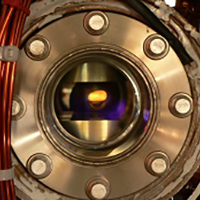Ultracold chemistry represents a fascinating intersection of quantum mechanics and chemical dynamics, where the thermal energies of particles are drastically reduced to a fraction of a degree above absolute zero. In these extremities, atoms, particularly those belonging to the Fermi gas category, exhibit behaviors that stray far from classical predictions. As temperatures plummet, the vibrational and translational motion of these particles condenses, facilitating unique interactions that bear the hallmark of ultracold phenomena. This article delves into the captivating world of ultracold chemistry, emphasizing the bonding of Fermi gas atoms in these frigid conditions.
Within the realm of ultracold experiments, Fermi gases serve as an enthralling subject of study. These gases consist of fermions, a class of particles that abide by the Pauli exclusion principle. This principle posits that no two fermions can occupy the same quantum state simultaneously, providing a stark contrast to bosonic counterparts, which readily coalesce. When subjected to temperatures near absolute zero, Fermi gases manifest quantum degeneracy—an event where the kludge of atomic positions diminishes, yielding wave functions that affinity-enhance inter-particle correlations.
As we plunge deeper into the mystical abyss of ultracold conditions, the phenomena of Fermi gas atoms engaging in chemical bonding introduces an intriguing narrative. The suppression of thermal agitation invokes a symphonic dance governed by quantum tunneling and molecular resonance. Herein, the energies associated with the formation and dissociation of bonds become tantalizingly close to the quantum ground state. This environment facilitates the creation of diatomic molecules from individual atoms and, intriguingly, allows exploration into the formation of exotic states that may be unattainable under conventional thermal conditions.
The cooling of Fermi gases is typically achieved by employing advanced laser cooling techniques, magneto-optical traps, and evaporative cooling. Using laser cooling, photons impart momentum that effectively slows down the atomic motion. Combined with magnetic fields that manipulate atomic spins, scientists can segregate specific energy states, enabling a tantalizing approach to realize the Fermi sea—a fundamental state of matter characterized by the collective behaviors of fermions. The construction of a Fermi sea not only lays the groundwork for ultracold chemistry but also sets the stage for investigating novel quantum states of matter.
Examining the chemical reactions within such a unique framework yields profound insights. For instance, the interaction between Fermi atoms can culminate in what are known as ‘Associative Processes’—a phenomenon where two atoms merge to form a molecule while simultaneously ejecting a third atom from the reaction tableau. The energetics of such processes are fundamentally altered in ultracold chemistry, where the low-energy environment mitigates barriers that would typically prevent such reactions in warmer settings. Consequently, we witness the emergence of novel entangled states and diatomic molecules that challenge our classical comprehension of chemical bonding.
The highly controllable nature of interactions in ultracold chemistry opens avenues for exploring the interplay between particle statistics and interaction strength. By adjusting scattering lengths, scientists can tune the interactions between atoms, thereby modulating bonding characteristics. This phenomena elucidates the concept of a ‘Feshbach resonance’—a quantum mechanical phenomenon where the scattering length becomes significantly large, dramatically influencing the state of the system. It provides a means to synthetically design the effective potential, equivalently modulating the chemical landscape in a controlled manner.
Perhaps the most captivating aspect of ultracold chemistry is the potential for revealing new physical laws governing molecular dynamics. The research surrounding ultracold Fermi gases has already underscored the existence of various exotic states, such as superconductivity arising from pairing mechanisms unique to fermions. The implications of these findings extend beyond mere academic pursuit and venture into practical applications, spanning quantum computing and precision measurement technologies. As researchers continue to probe these extreme regimes, the synthesis of novel materials with tailored properties is set to revolutionize various fields, bolstering both theoretical predictions and empirical inquiry.
Moreover, the exploration of ultracold chemistry also poses philosophical questions about the nature of reality itself. As dimensions of temperature and energy cease to adhere to familiar constructs, the characters of particles evolve. Quantum superposition and entanglement become not merely theoretical constructs but observable phenomena that challenge classical determinism. Investigations into ultracold fermionic mixtures, including the orchestration of spin-polarized gases and their interactions, hint at the potential to unlock new material phases, spurring revolutionary advancements in condensed matter physics.
To summarize, ultracold chemistry acts as a fascinating lens through which we can scrutinize the behavior of matter at the edge of absolute zero. Herein, Fermi gas atoms, bound through the chill of their surroundings, engage in interactions that transcend traditional chemistry. As the frontier of science evolves, the insights garnered from ultracold regimes will undoubtedly illuminate pathways to unexplored realms of physics and chemistry, ultimately reshaping our grasp on matter and its myriad manifestations. The intricate dance of Fermi gases in frigid temperatures bears witness to nature’s wonders, paving the way for transformative discoveries and technological advancements in the annals of science.












